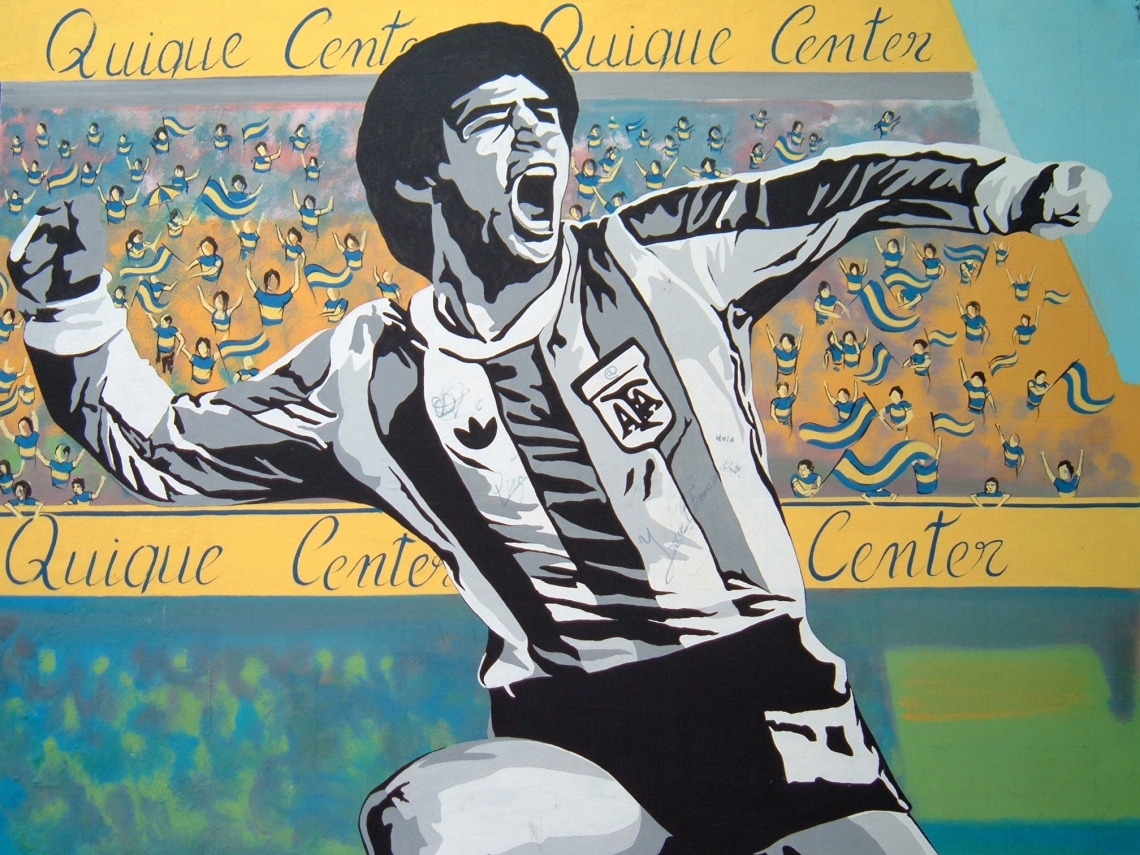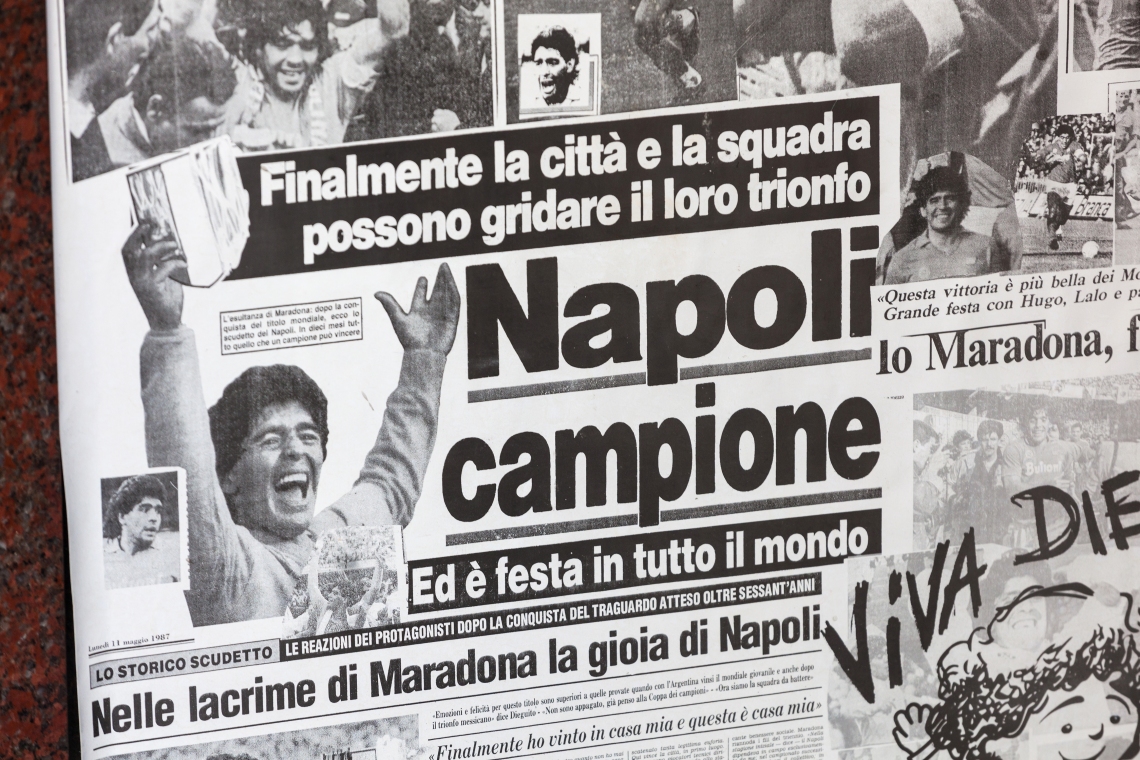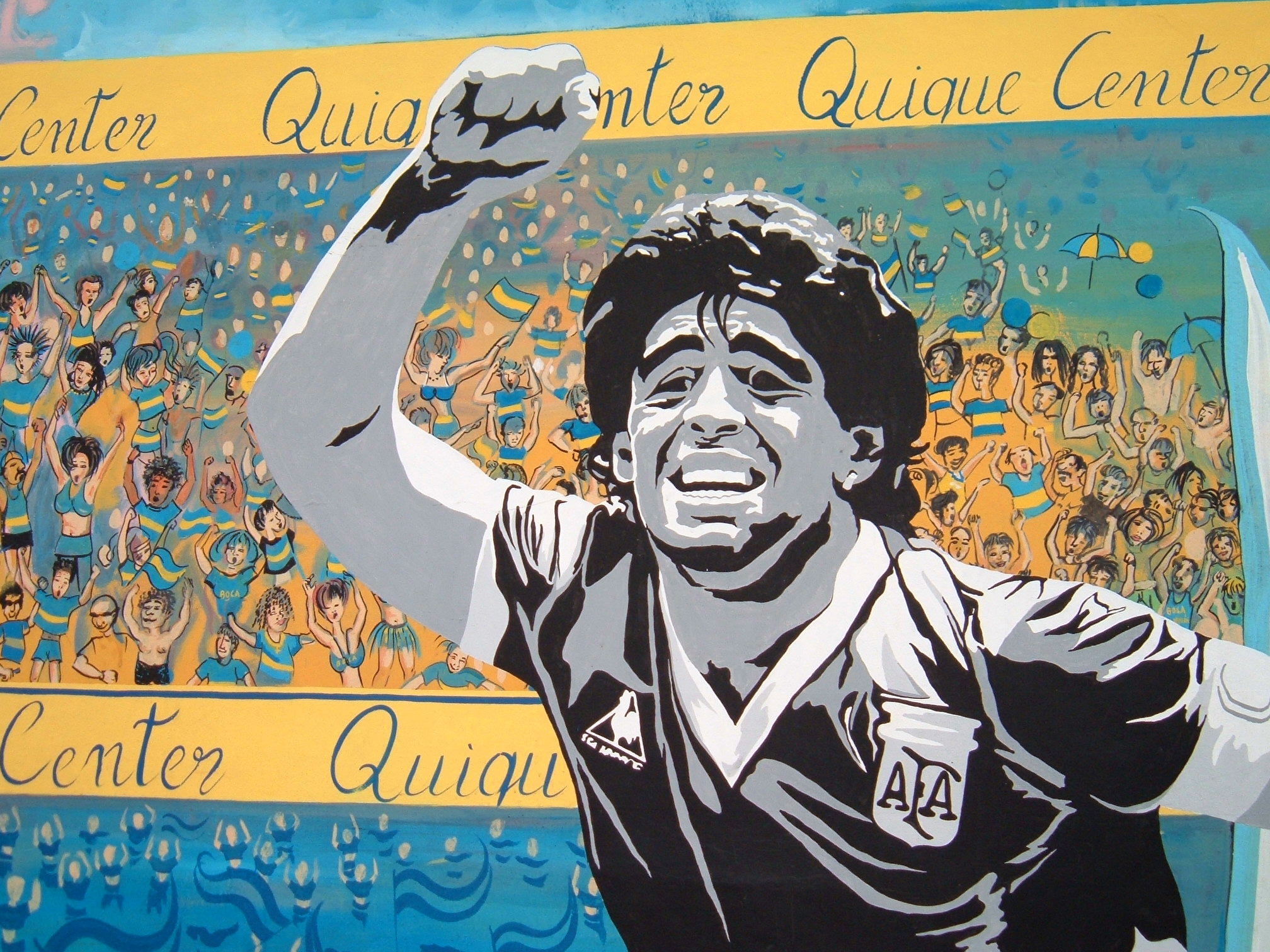Pele has more World Cups. Lionel Messi and Cristiano Ronaldo have more Ballon D’ors. Then why does a certain old and grumpy, overweight cocaine addict appears alongside them?

If you are following this World Cup, you’d have seen El Diego, sitting in a comfortable chair, smoking in a no-smoking zone, helplessly watching his beloved Argentina fail time after time.
This fellow who goes by the name of Diego Armando Maradona outperforms the likes of Cruyff, Beckenbauer, Eusebio, Garrincha, Charlton and Puskas and stands all the way up along with Pele as the Best player of 20th Century!
Yes that’s true. When in 2002, FIFA opened an online pole for the best player of 20th Century, Maradona won by an overwhelming majority. This was followed by FIFA setting up a panel of experts to decide the Best Player and they voted in favor of Pele, resulting in the crown being shared by Maradona and Pele together. This incident, just one of the many, pretty much sums up the Argentine’s relation with The Body.
Coming back to the Man of the Century, Diego Maradona’s career is one of the most eventful careers for a professional footballer. World Cup winner on his own, the number of trophies do not define his stature. He is the one who defines his greatness, and in turn, his demise.

Such is Maradona. On the pitch he was a delight, off it-a disaster. Across leagues and continents, wherever he went, people cheered him and when he had served his purpose they jeered him out. In his own homeland, he carried the weight of them all alone, he gave them their best moment but when he needed them he found himself cornered up. His story, just like his persona is all but dull.
Style of Play
Maradona had a compact physique and a below average height of 5ft. 5in. and yet in the world full of footballing giants, he was the tallest.
With a dominant left foot, Maradona played primarily as an attacking midfielder, creating chances and often finishing them on his own. He played with the ball close to his feet and with short touches. Dribbling, change of speed and vision were his greatest assets. Maradona was also good at Rabonna. He was the guy who could blast one from outside the box or run through the entire defense and humiliate the keeper just before delivering the ball in the goal. Short stature, insane dribbling, commendable change of speed and sublime vision, does this remind you of another Argentine?
Maradona was effective. He not only scored 34 goals in 91 games for his national side and 259 in 491 appearances in his club career, he scored them at vital moments, deciding the match on his own and saving his side more often than not.
Career Legacy
Club Career
Maradona’s club career has not found the same limelight as his International career. This doesn’t mean it was by any means, ordinary.
A child prodigy, Maradona started at Argentinos Juniors and was noticed instantly. He next took to Boca Juniors in favor of their rivals River Plate where he stayed just one year but won the league.
In 1982, Maradona swapped continents as he chose to go to F.C. Barcelona and in turn, breaking the international transfer fee record, a feat he would repeat later in his career when he’d move to Italy. His performances in the blaugrana shirt earned him a standing ovation at Santiago Bernabeau, home of their biggest rival, Real Madrid. Only Ronaldinho and Andres Iniesta have had this honor except El Diego.
But Barcelona is not the talking point of Maradona’s club career. Constant injuries and rash behavior made him a liability, something Barcelona had to do away with as they sold him to S.S.C. Napoli, an Italian club, in the season of 1984.It was here that he would write the most important chapter of his Club Career legacy.

In a country marred with North-South tensions, Maradona was not just another footballer in the southern city of Naples. He was their hope, their best chance against the mighty and rich Northerners who despised the economically weaker South. Maradona was their savior. Under him Napoli won their first ever League title in 1986-87 and then again in 1989-90.He had done the impossible. In a league dominated by clubs from the North, Maradona ousted them all and allowed the people of Naples to dream.
They called him Santa Maradona and painted his murals on the walls of Naples. When his life of the field started affecting his performance and his cocaine addiction began to cause problems, they ditched him.
Maradona was the God of Naples. They worshipped their God and later, crucified him.
International Career
Maradona’s world cup journey started in disappointment and ended in disgrace. In between, he managed to single-handedly win the World Cup once and lose in the final of the next.
El Diego played in 4 world Cups from 1982 to 1994.In the first World Cup, Argentina were knocked out in the second round and Maradona was shown a red card amidst all this.
In the Mexico World Cup of 1986, the 25 year old Argentine captain looked to make amends. He fought with his everything and turned the tables in the favor of Argentina. Starting with a last gasp equalizer against Italy in the group stage, Maradona’s greatest performance was unarguably against England in quarter finals. In this match, Maradona scored two famous goals, one The Hand of the God where he cleverly used his hand to chip the ball over Peter Shilton, the goalkeeper, and the other, voted as the Goal of the century, where the Argentine received the ball in his own half and then away from one, two…five followed by rounding up Shilton before sending the ball in the back of the net. All that magic and he never ever used his right foot in that trickery. For Argentines, it was their payback to the loss of Falkland Wars at the hands of British. English striker, Gary Lineker who was standing at the other end, couldn’t help but clap!

And while his performance against England was phenomenal, Maradona retained his sublime form in the semifinal against Belgium where he scored a brace, with the second one coming in the similar fashion as he dribbled past 3 Belgian defenders to score. In the final, Maradona setup the decisive goal as Argentina beat Germany 3-2 to lift their Second World Cup.
While the World Cup of 86 provided Maradona with his greatest moment, the 94′ World Cup brought his lowest. Maradona failed a drug test and was sent back home. Media houses all over the world butchered him, spun stories of how he used drugs to enhance his performances. The Italians booed him, the English held him accountable and Sep Blatter, who was going to be the next FIFA President, went on to say “The last great Argentine was Di Stefano. ”Di Stefano, who changed his nationality from Argentina to Spain, was somehow greater than a World Cup Winner Diego Armando Maradona!
Wherever he went, he brought glory to his side. He was a performer. He was good for TV ratings. People came in flocks to watch him and when he fell, his rivals started devouring him.


Maradona didn’t do wonders because of his drugs. He did it in spite of them. If you were to tell me Maradona could play only that well because of his drugs, it is you who are high. For Maradona was a talent from his childhood. A since then, he was carrying the weights of millions on his shoulders. He was afraid to be Not Great. Maradona’s need to be Maradona every day of the year took a toll on his health and he indulged in drugs, medicines and what not in trying to maintain himself.
Maradona was a rebel. His clinical style of play marked with his rebellious attitude made him an idol for the kids. An entire generation of kids over the world, revere Maradona as the greatest and as it stands the Argentine remains a World Cup Legend.

